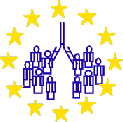
Progress
ECRHS II SUMMARY OF ACTIVITY
-
Thirty centres (24 EU funded centres) took part, 29 in stage I. Of these centres, 27 took part in Stage II, the clinical assessment.
-
ECRHS II collected around 13000 (11000 from EU funded centres) short, screening questionnaires asking about asthma symptoms.
-
About 11,000 (9,500 from EU funded centres) individuals were assessed in clinics and provided health data from the detailed questionnaire, most of whom also provided quality of life information, lung function and bronchial responsiveness data. Around 8,200 (7,000 from EU funded centres) blood samples for total and specific IgE were collected and about 4,700 participants from EU funded centres gave blood samples for DNA.
-
Most EU funded centres took part in home visits where the home environment was assessed and a dust sample was taken from the participant's mattress to assay levels of house dust mite and cat allergen.
-
About 3,500 dust samples have been collected for the study.
-
21 centres carrying out PM2.5 monitoring completed assessments in their towns across 10 European countries The protocol and standardised operating procedure for PM2.5 were developed by ECRHS Swiss partner, the University of Basel.
-
A database containing summary statistics of outdoor air pollution together with details such as characteristics of the monitoring location and number of years of data was established.
-
Historic data on ambient air pollution were collected from 35 cities in 17 countries and a report is available.
-
Please see Publication list for details of analysis
ECRHS III SUMMARY OF ACTIVITY
-
ECRHS III collected around 10,500 short screening questionnaires asking about asthma symptoms, asthma medication, nasal allergies, COPD and smoking.
-
Approximately 6,500 individuals were assessed in clinics and provided health data from the detailed questionnaire. Most of these individuals also provided quality of life ,lung function, physical activity, body shape and sleep data.
-
Approximately 5,500 samples for total and specific IgE were collected.
-
Approximately 3,500 food frequency questionnaires were collected.
